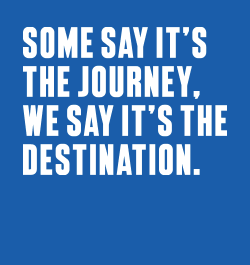UP TO THE MINUTE
Your preferences matter!

By Ingage.
Uncover the ways products and services can be aligned with your personal purchasing preferences.
Imagine having every product, service and recommendation tailored precisely to your preferences — all because you agreed to share a few details about yourself. But as much as personalization feels like a modern-day magic trick, it's grounded in the very human act of giving permission. With us here at Ingage, discover the delicate dance between customer consent and the personalized experiences that brands strive to deliver and why your "yes" can transform the shopping experience from generic to genuinely unique.
Providing personalization services requires customer consent
How do companies achieve personalization? The answer is data collection. As long as leads or customers agree to share their private data, companies will extract every detail that might influence future buying decisions. This includes demographic profiles that place the buyer into the appropriate market segment. Internally, a customer’s purchase history and customer service interactions can also help shape their future purchase journeys. Additionally, consumers who dutifully respond to and fill out surveys provide brands with detailed material that helps deliver better-personalized services.
A major buzzword in personalization is consent. To give customers those articles, recommendations and services that are tailored to their preferences relies on having the right information. That said, you need their express consent to access that customer data. Oftentimes, brands just need to assure consumers that the data they gather will be used for specified purposes only.
Why personalization matters
Why do customers prefer personalized services? For one, it makes transactions less about business and more geared toward the individual. Personalization assures buyers that the seller isn’t simply pushing products but rather offering solutions to their specific needs.
Improves customer experience
A brand’s personalization efforts can begin with something simple. For instance, the act of addressing a customer by their name is a great start—and a good indicator of what to expect going forward. Buyers also appreciate custom product offers and promotions based on their previous purchasing history.
During the initial stages, brands may want to take note of information that prospective clients looked for. Requests to download white papers, survey reports or industry news likely indicate a heightened interest in the subject. As such, brands will be more than happy to provide additional information, including sales materials for these products.
Increases customer loyalty and retention
Personalized services make shopping online a more intuitive and rewarding experience. Customers are likely to repay a brand’s efforts by increasing their average purchase value (APV) and staying loyal. In fact, Twilio’s The State of Personalization 2021 report noted the evolution of personalization from a nice-to-have feature to a necessity. The takeaway here is that 60% of customers are more likely to become repeat buyers after a personalized experience.
Encourages customer engagement and reach
In social circles, calling somebody by their name is a mark of familiarity. You tend to share stories and converse more freely with people you’re familiar with. Personalization provides the same effect, upping the likelihood of that customer reaching out and engaging with your brand. After all, it’s easier to communicate with a brand that already knows your interests. As a result, customers are more liable to visit company websites and social pages to look for information, browse products and interact with posts.
Improves conversion success rates
Personalization lets brands recommend products and services that address the customer’s needs. Instead of blindly throwing out the whole product catalog, brands can match an individual’s specific requirements with the best solutions. Furthermore, knowledge about a customer’s purchasing history can lead to offers for related products. Brands can then upsell, cross-sell or deliver bundled recommendations that provide additional value for money. These tactics ensure it’s a no-brainer for customers to complete the purchasing journey right then and there.
Elements of personalization
When aiming for personalized services, brands have several tools at their disposal. Utilized correctly, these tools can help make customers feel seen and valued—increasing the likelihood of a purchase. For existing customers, personalization may also lead to longer-lasting relationships and higher levels of engagement.
Personalized web pages
A properly personalized website goes beyond adding a prospect’s name to the initial greeting. It should contain curated content based on what the customer expects to find on your site. From the outset, it’s crucial that the website reflects the company’s understanding of the customer’s need—that is, for solutions to their problems. A truly intuitive and personalized site will also consider factors like location and language, for example, asking whether the user wants to transfer to a local site or switch to a local language.
Product recommendations
How do online stores determine their product recommendations? One the one hand, brands desperate to unload inventory will prominently feature push items and markdown products. On the opposite end of the spectrum, brands hoping to capitalize on popular products will showcase their best sellers across the site.
Moreover, brands focused on delivering a personal experience will carefully examine a visitor’s purchasing history to get a better idea of what they want. To illustrate, a customer who recently searched for the top vacuum cleaner brands will find a list of best-selling models among their product recommendations.
Retargeted ads
The main difference between targeted and retargeted ads is the intended audience. Targeted ads are aimed at untapped prospects and leads who have yet to interact with the brand. Meanwhile, retargeted ads turn the spotlight on people who previously engaged with the brand but didn’t buy anything. It could be a shopper who got cold feet during checkout—or simply abandoned their cart and promptly forgot about it. Retargeted ads can also serve as reminders to prospects who chose other brands subsequent to their research. In this case, the ad provides an alternative option if things aren’t working out with their original choice.
Personalized content
Buyers often start the sales journey by researching their planned purchases. They compare competing products, check features and weigh benefits. Often, their research will lead them to brand websites to gather more information about the product or service. Examples include blog articles, research papers, annual survey results and product reviews. As the prospective buyer starts reading an article, other related information will show up at the bottom of the page.
Email personalization
Personalization in email marketing started with the use of mail merge tools to paste a customer’s name in the email heading and greeting. However, despite the custom name, the email content was an overly generic, one-size-fits-all communication.
Today, it takes a lot more than that to convince buyers to consider your solutions. Modern email personalization now makes use of segmentation to deliver custom email content to specific audiences. This means that only customers who share the same interests will receive the same email.
Location-based recommendations
Another drawback to non-personalized sales and services is an apparent insensitivity regarding locations and time zones. Sending email marketing that’s written in English is fine if you’re serving the US, UK, Canada and the former colonies. However, that same English email can miss out on a bigger audience in markets such as Japan, South Korea, China, Germany and France. Location-based segmentation helps avoid this problem by targeting localized content to non-English markets.
Similarly, location-based product recommendations can also raise customer engagement by eliminating the possibility of recommending unavailable or banned items (for instance, food or sensitive technology). Instead, simple filtering rules ensure that only locally available products form part of a recommended list.
A note on personalization and segmentation
Segmentation, which earned a few mentions in this article, allows marketers to isolate specific groups based on common characteristics. A segment is a subgroup of a market that possesses attributes distinctive from others. Segmentation enables sales teams to subdivide a broader market into more manageable parts. This lets brands carry out segment-specific promotions instead of launching an all-in-one campaign that may not appeal to everyone.
Personalization is a more powerful version of segmentation, as it provides for in-depth differentiation between individuals in a single market. Furthermore, it creates a fully customized user experience that’s unique for each customer.
Modern buyers prefer personalization
Creating and developing content for specific audiences requires mastering the art of personalization. In sales, nothing highlights your personalization skills quite like making a presentation. Usually, teams will create a template presentation that contains all the details needed to close the sale. However, individual presenters will need to modify the template and include personalized elements before presenting to the target client. This includes a summary that demonstrates an understanding of the client’s specific problem, followed by a comprehensive approach to presenting a solution. Finally, the presentation should conclude with the merits of the service or product offering, appealing to the audience via a call to action.
Ingage is cloud-based interactive presentation software that’s perfect for your personalization requirements. You can use interactive elements to expand or collapse sections, while its cloud-based system lets multiple users connect remotely and collaborate on a single document. In addition, powerful analytics features allow creators to identify sections that received positive feedback. At the same time, Ingage can also identify which sections need improvement so that audience engagement remains high.
Original article source: Ingage
Learn more about Ingage in their Coffee Shop Directory or visit www.ingage.io.



















Comments
Leave a Reply
Have an account? Login to leave a comment!
Sign In